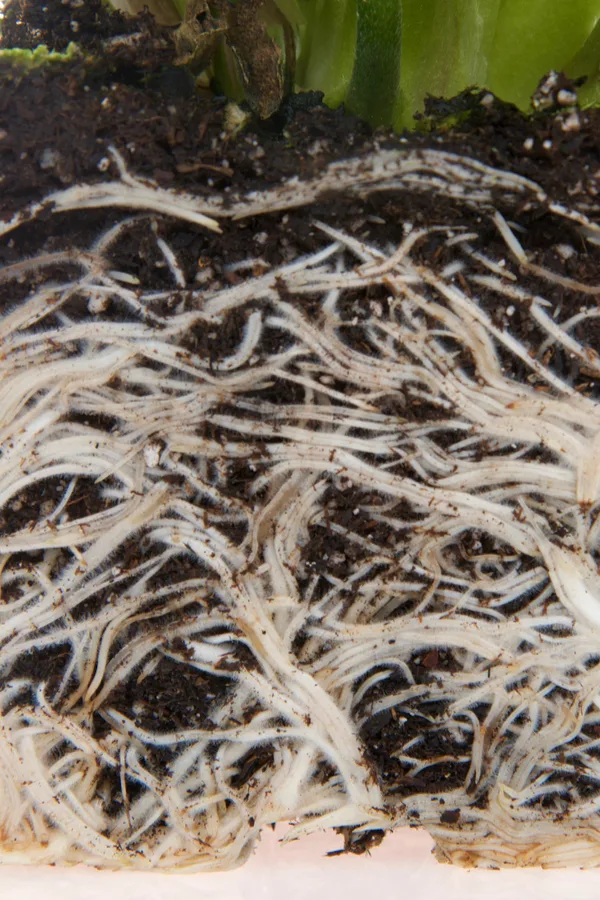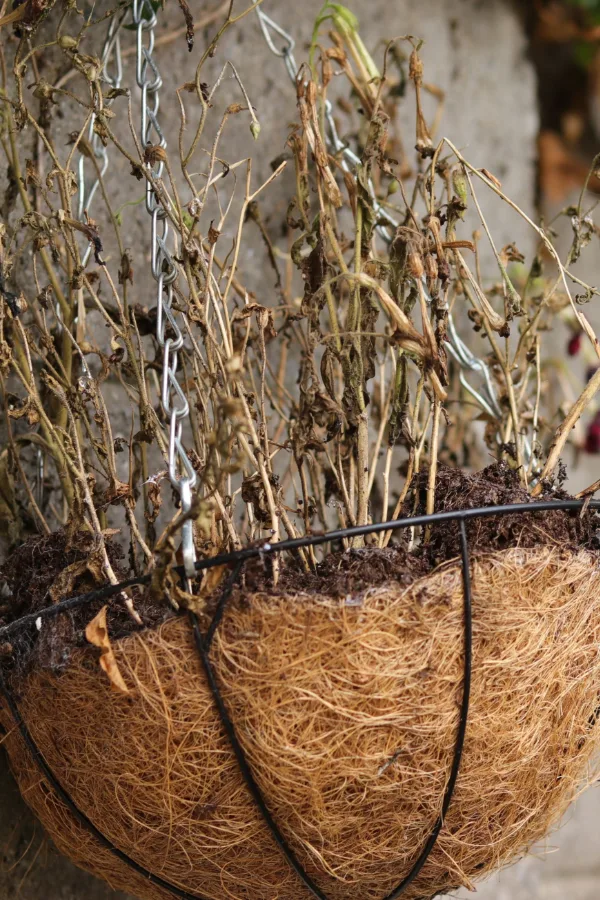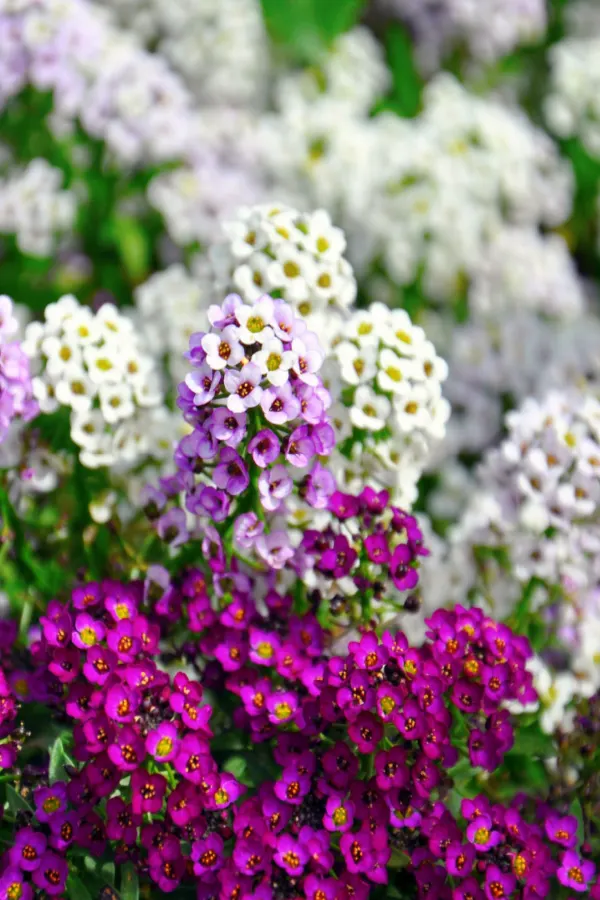Looking for a way to save your dying hanging baskets and container plants and bring them back to life?
As summer hits full stride, many flowering baskets and potted plants begin to take a turn for the worse. Plants that were once filled with gorgeous blooms and bright green foliage now look like they are more ready for the compost pile than brightening up a porch or patio.
But don’t toss those plants to the curb just yet! Bringing those sad plants back to life is easier to do than you might think. Even for novice growers or those who don’t think they have the proverbial “green thumb”.

Container plants can be quite an expense for the home gardener. Whether you plant your own or purchase your baskets and potted plants from a local nursery or greenhouse, they certainly aren’t cheap. So why not get the most bang for your buck and keep them around to enjoy all summer?
With that in mind, here is a look at the root cause of why most hanging baskets and containers begin to fail, and two simple methods to revive your plants and get them flowering big once again!
How To Save Dying Hanging Baskets & Container Plants
Diagnosing The Problem
The first step to success is to make sure your plants are not suffering from a simple lack of attention. Whether that be too much or too little water, or a lack of nutrients. Unfortunately, many times, inconsistent watering or a lack of fertilizer is root cause of plants failing.
The good news is that these types of issues can easily be remedied with a bit of extra attention. (See: Fertilizing Potted Plants & Hanging Baskets – How To Keep Your Plants Blooming)
But in many cases, even the most well cared for hanging baskets and containers begin to fade fast in early summer. And for these plants, no amount of water or fertilizer is going to help. It can certainly be frustrating. Especially for gardeners who have worked diligently to water, fertilize and care for their plants.
Mid-Summer Failure – How To Save Dying Hanging Baskets & Container Plants
When a well-cared for plant suddenly begins to lose its luster in early or mid-summer, the cause can almost always be tied to the plant becoming root bound.

Once a plant’s roots have become wound tightly together, it is nearly impossible for them to absorb water or nutrients. When this happens, water simply runs right through the basket. As do any fertilizers applied to the plant as well.
Unfortunately, at this point, leaving the plant in its container simply isn’t an option. No amount of soaking or fertilizing will work to allow the plant to absorb enough of either to power it back up. The plant will continue to slowly fade and eventually die.
So what is a gardener to do to save their plants? There are actually two great methods for rejuvenating root bound plants – and they both involve replanting. But no matter which method you choose below – the biggest key of all is to jump into action quickly. The longer plants are allowed to struggle, the tougher it will be to bring them back to life!
2 Methods To Revive Dying Hanging Baskets & Container Plants
Repotting
The first and most common method to bring your hanging baskets and container plants back to life is to replant them into a larger vessel.

Unfortunately, most commercial hanging baskets are sold using ten or twelve inch pots. These smaller baskets simply don’t have enough soil in them to allow an entire summer of root growth. In fact, to make it through an entire growing season, baskets need to be a minimum of fourteen to sixteen inches from the start.
For replanting, select a new basket or container with at least 1/4 more growing space. The more room the better. This will give plenty of space for roots to expand out and bring in nutrients quickly. More importantly it will also allow enough room for your plant to last for the remainder of the season.
Tips For Repotting…
When repotting, start by filling the bottom of your container with a high quality potting soil. Before sitting the root ball into the new basket, be sure to loosen the tightly wound roots. Gently break apart the bottom of the roots, taking care to keep them intact to the root ball.
Breaking apart the bottom of the root bound ball is critical to success. This allows the plant to breath and grow into the new soil. And as it does so, it will be able to soak in the nutrients and water it needs to thrive once again.
We love mixing in 1/2 to 3/4’s of a cup of worm castings to the potting soil mix. The nutrients in the worm castings absorb quickly into the plant, helping it to revive at a much faster pace.

Finish by filling the remainder of the pot with potting soil, and then giving the plant a good watering with a dose of liquid fertilizer. This step is extremely important! Root bound plants have been suffering from not being not being able to absorb water or nutrients – and now that they have room to grow, powering them up with a liquid fertilizer will shock the plants back into growth mode.
Replanting – How To Save Dying Hanging Baskets & Container Plants
So what happens if you are trying to save a hanging basket or container plant that is simply too large to find a suitable basket or container? Once again, don’t throw that plant away! Instead, replant it directly into your landscape for a huge splash of annual color.
We have been using this trick for years, and it works like a charm. Not only does it save the plant, it adds a massive splash of color anywhere you need it in the landscape.
Over-sized hanging baskets and container plants can have an incredible second life when directly planted into flowerbeds or garden areas. Simply remove the plant from the container, gently loosen the root ball, and plant- adding a bit of compost or worm castings into the soil as you do.

Just like when replanting, give the plant plenty of water and a dose of liquid fertilizer. This will help to jump-start its growth in its new surroundings. With all of the new space and soil available, you will be amazed at how quickly the plant bounces back to life!
Here is to saving those struggling hanging baskets and container plants, and to keeping those blooms coming on all summer long! Happy Gardening, Jim and Mary
Jim and Mary Competti have been writing gardening, DIY and recipe articles and books for over 15 years from their 46 acre Ohio farm. The two are frequent speakers on all things gardening and love to travel in their spare time.
As always, feel free to email us at thefarm@owgarden.com with comments, questions, or to simply say hello! You can sign up for our free email list in the subscribe now box in the middle of this article. Follow us on Facebook here : OWG Facebook. This article may contain affiliate links.
